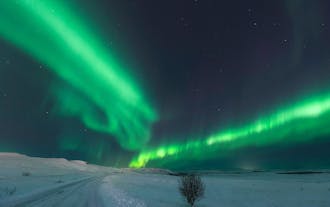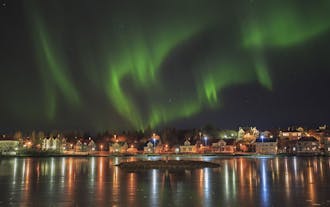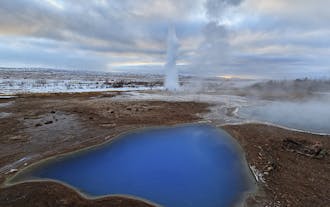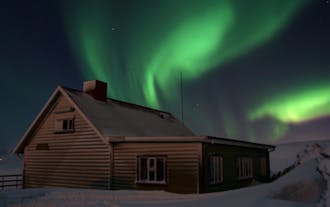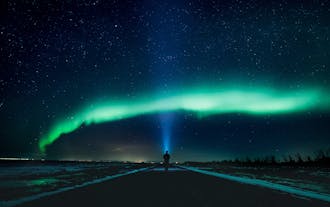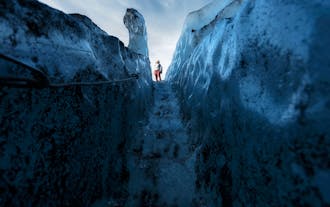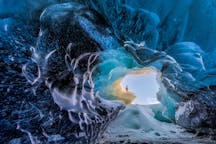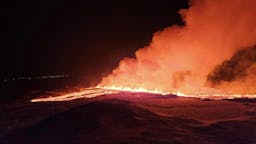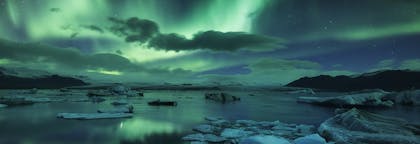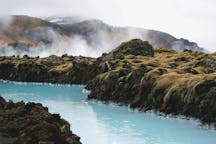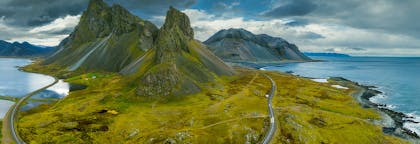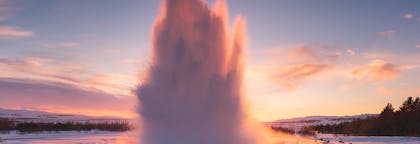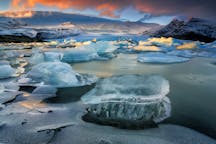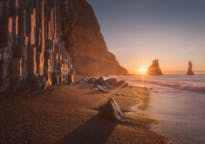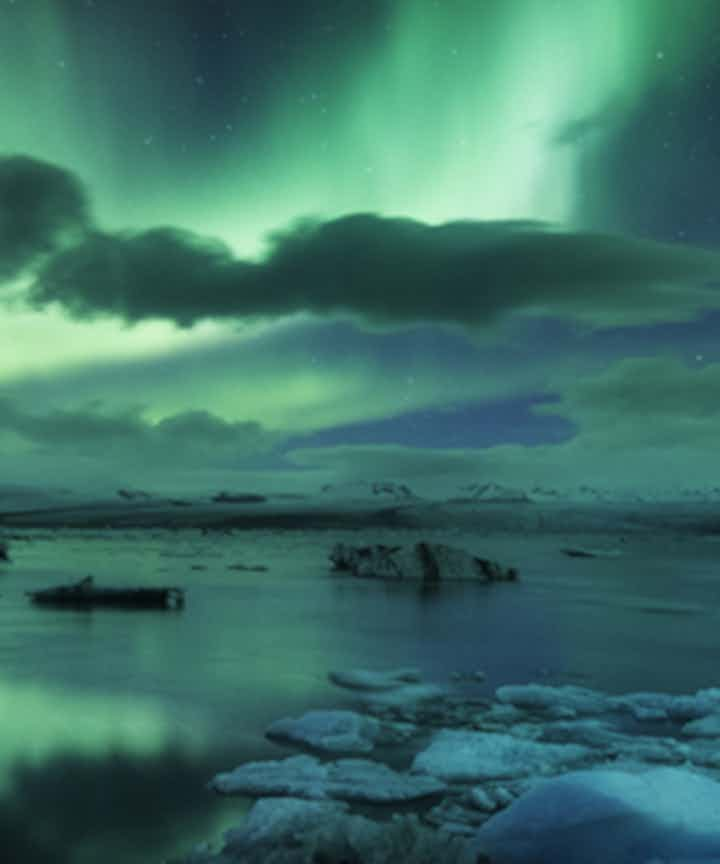
Best Northern Lights Tours in Iceland
Select starting location
Select dates
Add travelers
Northern Lights Tours & Holidays
Refine the results by using the filters
Explore an unequalled wealth of tours and packages
Verified customer reviews
Read first-hand reviews by customers from across the world
What are the Northern Lights?
The northern lights, otherwise known as the Aurora Borealis, are phenomena that occur at high latitudes when solar particles ionise as they enter the earth's atmosphere, appearing in the night sky in the form of waving ribbons of colour. These ‘ribbons’ have captivated their viewers for centuries, bringing about defying awe and unspeakable mystery.
The northern lights are, in fact, occurring throughout the year, yet it is only during the dark winter nights that they become visible to the human eye. This is, naturally, what makes northern light hunting one of the most popular winter activities in Iceland. You can partake in numerous tours that take you to the best northern lights spotting locations, such as an affordable Northern Lights Bus Tour that takes you far away from the city's light-pollution, or a Northern Lights Boat Cruise that allows you to witness the auroras out on the open sea. Outside of Scandinavia, it is only possible to go northern light hunting in such places as Alaska, northern Canada and Siberia.
Modern scientific understanding of the northern lights did not mature until the 1880's when researchers discovered their connection to solar activity. Further study, seventy years later, would deepen this revelation, with new breakthroughs made in the knowledge that electrons and protons travel to earth on a ‘solar wind’. Today, research is ongoing into the northern lights as we further our understanding of deep space and our connection to it.
The northern lights have long been known to the Scandinavian people, inspiring some of the greatest and longstanding tales to have ever come out of Norse Mythology.
One of the most prominent of these relates to Ragnarök, a great future battle that, as foretold, will see the world submerged in water, and a significant number of the Gods dead, including the likes of Odin, Thor and Loki. After the events of Ragnarök, it is said that the world will be born anew, strengthening the ancient themes of birth, death and rebirth.
To prepare for this battle, Odin, the Chieftain of Asgard, would summon his most prized warriors, the Valkyries, female battle-maidens who rode on horseback carrying spears and shields. Ancient stories would surmise that the northern lights were a reflection of this Valkyrian armour.
Another widely spoken about interpretation is that the aurora was the ‘Bifrost Bridge’, a rainbow walkway that led deceased warriors into the glorious, glowing halls of Valhalla.
To the Icelandic Vikings, the aurora was a phenomenon to be celebrated, a popular trend that has continued to this day with countless Northern Lights tours taking place across the land of Ice and Fire. Neighbouring Scandinavians, however, were less than trustful.
Many Norse people, such as the indigenous Finno-Ugric people, the Sámi, felt that the lights were to be feared. Believing these dancing green, red and yellow light waves to be the souls of the dead, the Sámi were careful to never show any sign of disrespect towards the lights, be that whistling beneath them, singing, talking or even waving them to them.
It is said, that those who fail to heed these warnings will be pulled up into the sky, forever trapped among these nocturnal spirits. Due to this slumbering myth, it is thought that some Sámi people, even today, will not go outside when the northern lights dance above.
It is perhaps the Finnish who have the most beautiful allegory for the auroras, believing them to be created by the arctic fox, an animal that just so happens to be Iceland’s only native mammal. The Finnish name for the aurora translates to “Fire Fox”, a direct reference to the ethereal fox that would dash so quickly across the night sky that his tail would brush against the mountains, thus causing a vast and colourful outburst of sparks.
Still, another interpretation of the Arctic fox story differs somewhat, and provides some justification on the part of an ancient people as to why the lights only appeared in winter; instead of sparks, the fox’ tail was thought to have kicked up snowflakes into the air which then caught the light of the moon.
When it comes down to the folklore of Iceland particularly, it was believed that the northern lights helped to soothe the pain of childbirth, though women who had yet to give birth were warned not to look at them directly, in fear that the child would be born cross-eyed.
During your visit in Iceland, you have the option of seeing the northern lights on your own. But should you want to view them from the best spots, far away from the light-pollution of human settlements, you would be well advised to take a northern lights tour, in which a knowledgeable guide tells you all there is to know about this fantastic phenomenon.
Frequently asked questions
When is the best time to see the northern lights in Iceland?
Why are the northern lights so common in Iceland?
Can I see the northern lights in the summer in Iceland?
Are northern lights tours in Iceland worth it?
Is a sighting of the northern lights in Iceland guaranteed on the tours?
What region in Iceland is best for spotting the northern lights?
What's the best northern lights tour in Iceland?
What's the cheapest northern lights tour in Iceland?
How much is a tour to see the northern lights in Iceland?
What happens if a northern lights tour in Iceland is canceled?
How long does a northern lights tour in Iceland last?
Is the northern lights tour going to be on a big bus or a minibus in Iceland?
Do you offer a northern lights tour from Reykjavik, Iceland?
Do you offer northern lights photography tours in Iceland?
What colors are the northern lights in Iceland?
What kind of camera do I need to capture the northern lights?
What are the best DSLR camera settings for capturing the northern lights in Iceland?
What causes the northern lights in Iceland?
What should I wear on a northern lights tour in Iceland?
What are the ideal conditions to see the northern lights in Iceland?
However, the only thing you can control is the amount of light around you. Avoid brightly lit areas and seek wide plains or other remote environments so you can see the sky clearly.
Do the northern lights happen every night in Iceland?
Therefore, they're not visible if it's bright outside (which is 24/7 during summers in Iceland), if it's cloudy, or if the light pollution in the city is too strong. Factoring in all requirements, the northern lights are visible about 3–4 days a week in Iceland during winter.
Can you see the northern lights in Reykjavik, Iceland?
What time of day is best to see the northern lights in Iceland?
Can you see the northern lights from the Blue Lagoon?
How long do the northern lights in Iceland last?
How long do northern lights tours in Iceland last?
Can I see the northern lights on my own in Iceland?

Download Iceland’s biggest travel marketplace to your phone to manage your entire trip in one place
Scan this QR code with your phone camera and press the link that appears to add Iceland’s biggest travel marketplace into your pocket. Enter your phone number or email address to receive an SMS or email with the download link.
